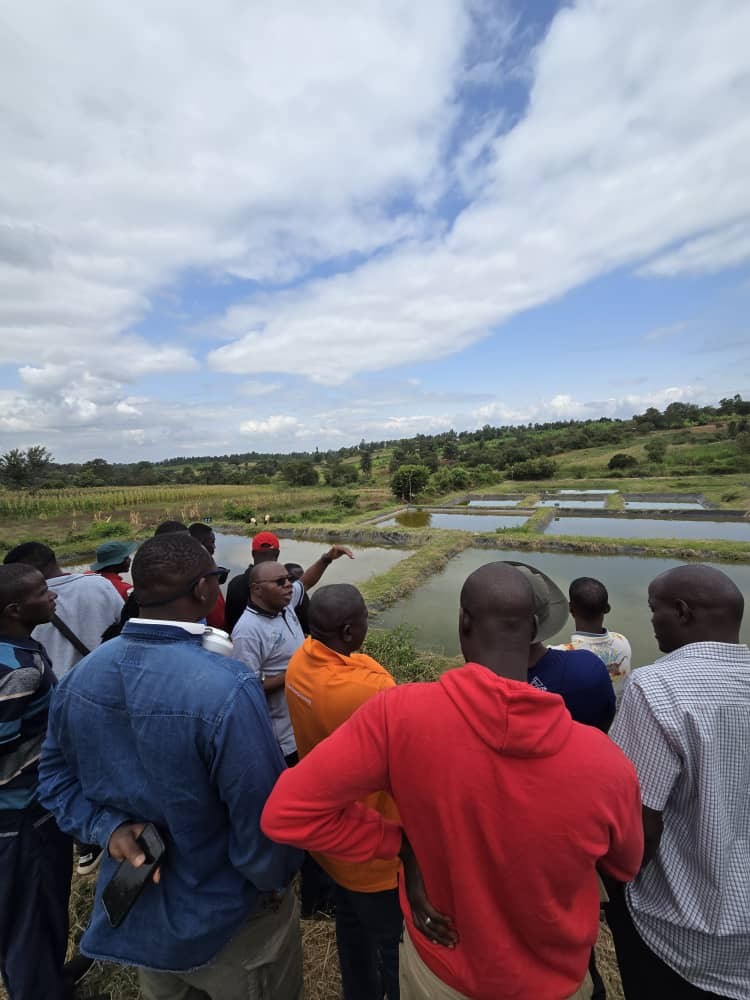
The ASA’s World Initiative for Soy in Human Health led a firsthand aquaculture training in Kirinyaga County, Kenya last week. The program included 28 participants from Kenya, Ghana, Nigeria, Tanzania, and Uganda. Hosted at Mwea Aquafish Farm, WISHH’s training focused on improving fishpond construction and feed management, which are important to develop a strong value train for aquaculture and trade for U.S. soy.
Led by WISHH’s five-member aquaculture team, the training emphasized the importance of properly compacted soil in earthen ponds, which are commonly used to raise tilapia and catfish in the region. Poor pond construction leads to water loss, higher production costs, and reduced fish yields. Participants also gained essential knowledge on the role of high-quality feed, including the advantages of using U.S. soy as a protein-rich, consistent ingredient.
Aquaculture in Africa is a rapidly growing industry. WISHH and its team is on the ground on the continent supporting the creation of needed infrastructure in countries like Kenya to continue the industry’s growth. As professionals adopt better aquaculture practices and build more resilient infrastructure, they also learn about the value of U.S. soy for fish feed, strengthening trade opportunities.
USDA Regional Agricultural Promotion Program funds supported the training program and trade team participants.
